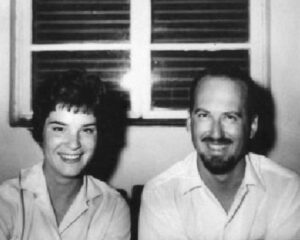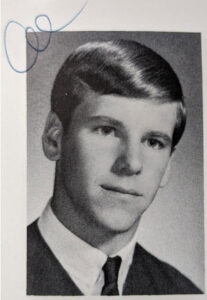Frederick John Simoons, Jr., a renowned cultural geographer, the latest-surviving of Carl Ortwin Sauer’s Ph.D. graduates, and an emeritus professor of Geography at the University of California, Davis, died on June 30, 2022, four months short of his one-hundredth birthday. He seems to have outlived most of his one-time graduate students.
Background and Education
Born on Nov. 2, 1922 in Philadelphia of World War I immigrant parents (Dutch and Flemish Belgian), Fred was raised in poverty in a single-parent home in a dangerous neighborhood of Newark, NJ. According to his one-time PhD student Daniel Wynne Gade (1936–2015; 1987b: 135), Fred’s parents’ European background and the neighborhood’s ethnic diversity contributed to the maturing child’s sense of culture in the anthropological sense.
Following stateside Army service during and just after World War II, he completed his AB in Sociology at Rutgers University but was impressed by courses taught there by the geographers Andrew Hill Clark (1911–1975) and William LeRoy Thomas, Jr. (1920–2002); accordingly, he declared a special interest in Geography. Simoons graduated in 1949, earning Highest Honors, and was named to The Phi Beta Kappa Society (Gade 1987b: 135).
He opted to take graduate work in Geography at the Berkeley-influenced University of Wisconsin-Madison. There, he met and married the librarianship student Elizabeth “Liz” Stadler (1925–2009), in April 1949. Still, sociology continued to appeal, and, supported by the GI Bill, Fred transferred to Harvard University’s Social Relations program—which included sociology, cultural anthropology, and psychology. There, impressed by a geography course taught by Derwent S. Whittlesey (1890–1956), Fred was stimulated to return to that field.
Obtaining a teaching assistantship at U.C. Berkeley, he removed to the famous Geography Department there, completing a 1952 master’s thesis under young James J. Parsons (1915–1997), “The Settlement of the Clear Lake Upland of California.” During his subsequent Ph.D. studies, he worked under the iconic pioneering cultural geographer Carl Ortwin Sauer (1889–1975), who had been fundamentally influenced by the writings of Romanticist German geographers, historians, and ethnologists and by his campus’s Germanic-American Franz Boas-trained anthropological colleagues Alfred Louis Kroeber (1876–1960) and Robert Harry Lowie (1883–1957; Williams, Lowenthal, and Denevan 2014). Fred absorbed Sauer’s Germanic historicist approach as well as the Old Man’s empiricism, very demanding work ethic, and surpassingly high academic standards.
Research
With Ford Foundation support, in 1953 Liz and Fred traveled to remote and risky northwestern Ethiopia to accomplish fieldwork for his dissertation, “The Peoples and Economy of Begemder and Semyen, Ethiopia” (1956), which emphasized horticulture. In 1960, the University of Wisconsin Press published the adaptation, Northwest Ethiopia: Peoples and Economy (reprinted by Greenwood Press in 1983).
Fred was fascinated by bovines and their religious roles. Office of Naval Research- and Guggenheim Foundation-fostered sabbatical fieldwork in southern Asia led to Fred and Liz’s learning of the mithan, a little-known bovine kept and used ritually by tribal peoples in India’s Assam hills. Subsequent library study resulted in UWP’s A Ceremonial Ox of India (Simoons with Simoons 1968).
Following their Abyssinian stint, for five months Fred and Liz had traveled widely across Subsaharan Africa. One result was that beyond domesticates and traditional farming, Fred had taken up an interest in food habits. His pioneering work on animal-food avoidances resulted in 1961 in the classic Eat Not This Flesh (Wisconsin; reprinted in 1981 by Greenwood). Thirty-three years later, in 1994, Wisconsin issued a revised and augmented edition. Numerous reviews and translations of Eat Not appeared.
Echoing the nineteenth-century German historian Eduard Hahn (1856–1928), Simoons stressed ritual and other non-economical motives for domestication and animal-keeping, contrary to the economic-adaptationist ideas of the cultural-ecological materialist anthropologist Marvin Harris and many others of the day (Simoons 1979).
Cattle, dairying, and milk are major themes in the Simoons oeuvre. At the end of the 1960s, Fred took note of the fact that adult lactose (milk-sugar) intolerance—the usual and genetically controlled human condition—did not pertain among select human groups, notably those having had a long history of dairying. Fred investigated further and, with three publications (Simoons 1969, 1970a, 1970b), first forwarded what came to be called the “geographic” or “culture-historical” hypothesis of the co-emergence of dairying and adult lactase-persistence, which affords the ability comfortably to digest lactose (milk sugar) past puberty (the chronologically lock-step nature of this has recently been questioned: Evershed et al. 2022). A flock of related studies followed, and Fred’s fame grew, including in medicine and in nutrition, and he collaborated with researchers in those fields. His final publication was on this topic (Simoons 2001). Simoons’s contributions in this area led to an above-step promotion and appointment as the UCD Academic Senate’s Faculty Research Lecturer for 1981, a top campus honor. In 1987, Fred’s old Wisconsin student Dan Gade edited a Simoons-Festschrift issue of the Journal of Cultural Geography (Gade 1987), including a bibliography (Simoons 1987)
Other food-habit and related topics also captured Fred’s attention over ensuing decades. Although knowing no Chinese, following extensive research, including field investigation with Liz, Fred produced Food in China: A Cultural and Historical Inquiry (Simoons 1991; translated into Chinese in 2003). In 1998, Wisconsin published his Plants of Life, Plants of Death, which dealt with plants culturally associated with ritual purity, fertility, prosperity and life, as opposed to those associated with ritual impurity, illness, ill fate, and death.
University Employment
Fred first taught as an instructor at The Ohio State University, staying but a year (1956–1957). The following nine years were passed at the Sauerian-flavored University of Wisconsin Department of Geography at Madison, which years saw rapid advancement to full-professorship, until the Louisiana State University Department of Geography and Anthropology recruited him (and Jonathan Sauer) in 1966; but, as in the case of OSU, he (like Sauer) left LSU after one academic year. There followed two academic years (1967–1969) in the University of Texas at Austin’s Department of Geography. Finally, in 1968 Simoons moved on to UC Davis’s Department of Geography, where he spent the remainder of his distinguished career, mentoring many graduate students, serving an effective term as departmental chair, and—after two decades of UCD employment, retiring in 1989. He and Elizabeth—1981 retiree as Branch Manager and Assistant County Librarian in the Yolo County Public Library system—moved to Olympia and then on to Spokane, WA. Fred continued to publish through 2001. Following Liz’s death in 2009, he established a domestic partnership with former Geography graduate student Helen Issel (1926–2021) and resided outside of Sonoma, CA. They both died at the Sonoma Retirement Home, he from complications following a stroke.
References Cited
Evershed, Richard P., et al. 2022. Dairying, Diseases and the Evolution of Lactase Persistence in Europe. Nature: International Journal of Science 608(7922): 336–45.
Gade, Daniel W. 1987. Commentary: Frederick J. Simoons, Cultural Geographer. Journal of Cultural Geography 7(2): 135–41.
Simoons, Frederick J. 1952. “The Settlement of the Clear Lake Upland of California.” Unpublished master’s thesis in Geography, University of California, Berkeley.
––––––1956. “The Peoples and Economy of Begemder and Semyen, Ethiopia.” Unpublished Ph.D. dissertation in Geography, University of California, Berkeley.
––––––1960. Northwest Ethiopia: Peoples and Economy. Madison: University of Wisconsin Press
––––––, with Elizabeth S. Simoons. 1968. A Ceremonial Ox of India: The Mithan in Nature, Culture, and History, with Notes on the Domestication of Common Cattle. Madison: University of Wisconsin Press.
––––––1961. Eat Not This Flesh: Food Avoidances in the Old World. Madison: University of Wisconsin Press; expanded 2nd ed. 1994.
––––––1969. Primary Adult Lactose Intolerance and the Milking Habit: A Problem in Biological and Cultural Interrelations. I. Review of the Medical Research. The American Journal of Digestive Diseases 14(12): 819–36.
––––––1970a. The Traditional Limits of Milking and Milk Use in Southern Asia. Anthropos 65(3/4): 547–93.
––––––1970b. Primary Adult Lactose Intolerance and the Milking Habit: A Problem in Biologic and Cultural Interrelationships. II. A Culture Historical Hypothesis. The American Journal of Digestive Diseases 15(8): 695–715.
______1979. Questions in the Sacred-Cow Controversy. Current Anthropology 20(3): 467–76. Williams, Michael, with David Lowenthal and William M. Denevan. 2014. To Pass on a Good Earth: The Life and Work of Carl O Sauer. Charlottesville: University of Virginia Press.
––––––1987. Research Publications,” Journal of Cultural Geography 7(2): 143–7.
––––––1991. Food in China: A Cultural and Historical Inquiry. Boca Raton, FL: CRC Press.
––––––1998. Plants of Life, Plants of Death. Madison: University of Wisconsin Press.
––––––2001. Persistence of Lactase Activity among Northern Europeans: A Weighing of Evidence in the Calcium Absorption Hypothesis. Ecology of Food and Nutrition 40(5): 397–469.
By Stephen C. Jett, University of California, Davis, [email protected]
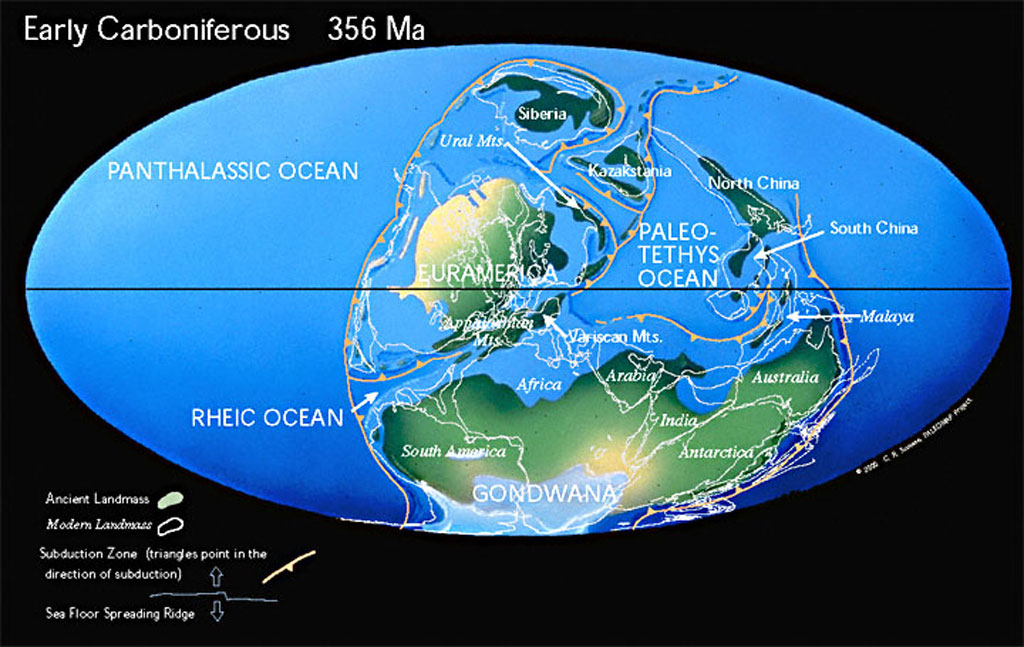
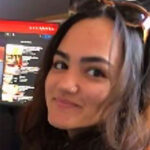 Iman Smith is a junior at the University of Maryland, pursuing a B.S. in Geographical Sciences and a minor in Geographic Information Systems. Her areas of interest include agricultural monitoring and crop management, and global food security. In her spare time, Iman likes to travel, crochet, make pottery, and she also hosts a college radio show.
Iman Smith is a junior at the University of Maryland, pursuing a B.S. in Geographical Sciences and a minor in Geographic Information Systems. Her areas of interest include agricultural monitoring and crop management, and global food security. In her spare time, Iman likes to travel, crochet, make pottery, and she also hosts a college radio show.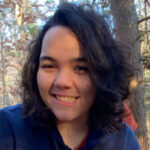 Allison Rivera is a senior at the University of Connecticut pursuing a B.S. in Geoscience and a minor in Geography. She is mostly interested in geomorphology and physical geography and is currently completing a senior thesis on such topics. After graduation, Allison hopes to attend graduate school and pursue further research in the field of geomorphology. In her spare time, she enjoys watching cartoons, going for walks, and reading.
Allison Rivera is a senior at the University of Connecticut pursuing a B.S. in Geoscience and a minor in Geography. She is mostly interested in geomorphology and physical geography and is currently completing a senior thesis on such topics. After graduation, Allison hopes to attend graduate school and pursue further research in the field of geomorphology. In her spare time, she enjoys watching cartoons, going for walks, and reading.